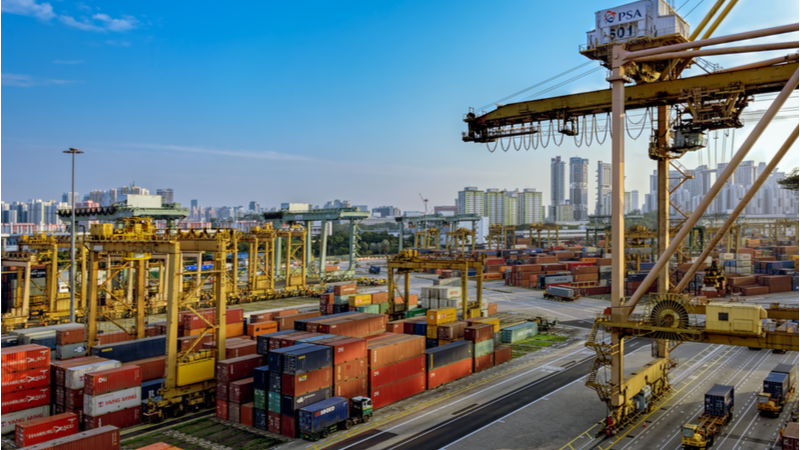RCEP shows that open regionalism still calls the shots
June 30 2022

Note: This article appeared in East Asia Forum on June 30 2022.
Whether fully intended or not, Australian trade policy is embracing a theatrical element that serves to lock in the country’s long-term interests. Canberra enthusiastically touts deals that have obvious potential to diversify trade away from China, including the Australia–UK Free Trade Agreement (FTA) struck in December 2021 and the Australia–India Economic Cooperation and Trade Agreement signed in April 2022. Yet the most significant agreement will see Australia more tightly integrated into an East Asian system with China further entrenched as its centre of gravity.
The 15-member Regional Comprehensive Economic Partnership (RCEP), which came into force at the beginning of 2022, has been described as ‘the first integrated trade bloc in the Indo-Pacific’. But with RCEP spurned by India and the United States not interested in joining, associating the agreement with the Indo-Pacific construct — which strives to dilute China’s economic and strategic weight — is a distraction.
More to the point is that Australia’s membership recognises the importance of ASEAN. ASEAN instigated RCEP and sees economic integration, including with China, as a source of both prosperity and security. RCEP includes an accession clause that activates from the middle of next year. The Hong Kong Special Administrative Region (SAR) has already submitted an application.
While the new market access opportunities afforded by RCEP are limited for Australia, the parliamentary Joint Standing Committee that recommended accession emphasises that its significance lay in ‘facilitating growing supply-chain integration’ by simplifying and harmonising trade rules and standards. In other words, it would lead to a greater proportion of intra-RCEP trade.
Powerful economic drivers, notably production complementarities and purchasing power, mean that in 11 of 15 member states, intra-RCEP imports already account for more than half of total imports. In the case of exports, the same threshold was exceeded in nine members.
China’s economic weight is pre-eminent, accounting for 51 per cent of RCEP’s collective GDP. The Hong Kong SAR will add to this as the eighth-largest member. No other member comes close as a market or has the capacity to feature more prominently in intra-regional supply chains. According to new Commonwealth Treasury projections, China’s weight will grow from 19 per cent of global GDP currently to 24 per cent in 2035.
Another factor in RCEP that will augment China’s gravity is Beijing’s commitment to significantly improve market access. While Australian businesses already enjoy preferential access through the China–Australia FTA, now all members are offered reductions on an additional 20 per cent of Chinese tariff lines with an average concession of 10 percentage points on each line. Once fully implemented, Japan will have a higher proportion of uncommitted tariff lines than China at 12 per cent versus 9 per cent.
The Biden administration’s Indo-Pacific Economic Framework (IPEF), launched in April 2022, has been billed in some quarters as a ‘counterweight’ to China’s regional clout and a desirable ‘new model’ of economic engagement by Washington. But these claims are hard to take seriously.
For starters, what the White House actually delivered after 18 months was an announcement to ‘launch collective discussions toward future negotiations’. And in contrast to Beijing’s RCEP commitments, greater access to the US market is already off the table. Nor are the conclusions to any ‘future negotiations’ expected to be binding.
While plenty of RCEP members have joined IPEF discussions, including ASEAN heavy-weight Indonesia, its merit for these countries has been undercut by the United States specifically excluding their most important economic partner, China.
On 26 May 2022, Singaporean Prime Minister Lee Hsien Loong summed up the regional assessment when he announced that while his country would be part of IPEF, ‘it is far better that China’s economy be integrated into the region, than for it to operate on its own by a different set of rules’. Former Malaysian prime minister Mahathir Mohamad was more blunt when he suggested that ‘a grouping that excludes China’ was political and not about the economy.
Like any trade agreement, there is no guarantee that RCEP’s rules will always be heeded. The fact that its enactment did not cause Beijing to immediately wind back its two-year-long campaign of disruption targeting Australian exports makes that clear. But the negative impact of these sanctions has been greatly blunted by the open markets and multilateral, rules-based system that RCEP aligns with and strengthens.
Supported by other initiatives like the Multi-Party Interim Appeal Arbitration Arrangement (MPIA), an alternative system for resolving WTO disputes that Australia and China have signed up for, RCEP provides a constructive framework for managing frictions — including those from the geopolitical realm. The alternative of greater protectionism or leaning into a bifurcated trading system of the sort trumpeted by those committed to fighting a new Cold War is a dead end for advancing regional interests.
RCEP demonstrates that for all the geopolitical tensions on display between members like Australia and China over the past half-decade, there remains much common buy-in to the East Asian future championed by ASEAN.
Professor James Laurenceson is Director of the Australia-China Relations Institute at the University of Technology Sydney.

